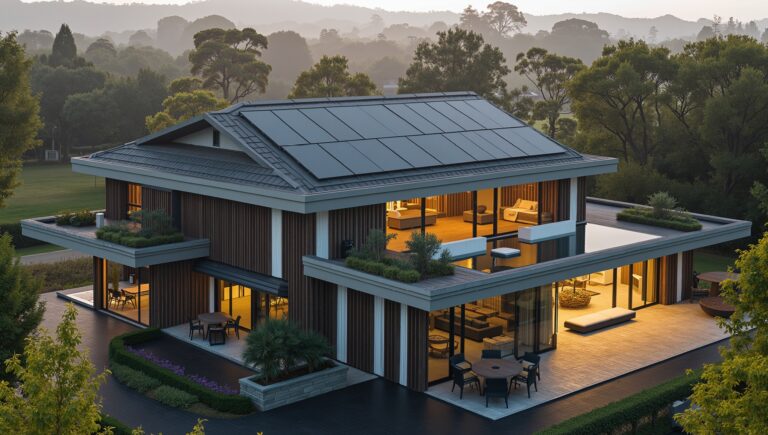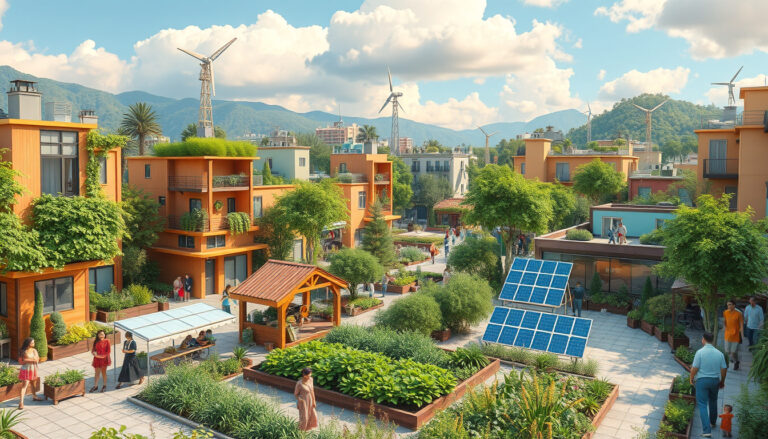In today’s world, the concept of sustainable living is not just a trend but a necessity, and renewable energy homes are at the forefront of this shift.
As the global community becomes increasingly aware of environmental issues, homeowners are seeking innovative ways to reduce their carbon footprint while enjoying the comforts of modern living.
If you’re contemplating a transition to a renewable energy home, or simply want to learn more about this growing movement, you’ve landed in the right place.
In this ultimate guide, we will explore essential aspects of renewable energy homes, their myriad benefits, and how to embark on your journey towards a greener, more energy-efficient lifestyle.


Cost Considerations and Financing Options
When diving into the realm of Costa Rica real estate, one must carefully consider the cost implications and varied financing options available, particularly when exploring the niche of renewable energy homes.
These eco-friendly properties are gaining traction, not only due to their sustainable living appeal but also for the long-term savings they can offer on energy bills.
Investors should initially assess the market prices of renewable energy homes, which may be influenced by their location, size, and the extent of their green technologies, such as solar panels and energy-efficient appliances.
Financing these homes often involves traditional mortgage options, but potential buyers may also explore specialized green loans provided by banks that cater to those investing in sustainable properties.
Additionally, local government incentives for renewable energy installations can help offset upfront costs, making these homes an attractive and economically viable choice in the thriving Costa Rican real estate market.
Case Studies: Successful Renewable Energy Homes
In recent years, the trend towards renewable energy homes has gained significant momentum, and several case studies highlight the successful integration of sustainable practices in residential properties.
One notable example is the Green Hills Eco-Community in Costa Rica, where homeowners have embraced solar power, wind energy, and rainwater harvesting systems.
This community not only reduces individual energy costs but also contributes to the overall sustainability of the region.
Another inspiring case is the Earthship Biotecture homes in Taos, New Mexico, designed to be self-sufficient by using recycled materials and passive solar techniques.
These homes showcase how renewable energy can diminish reliance on fossil fuels while promoting environmental health.
As more people seek energy-efficient solutions, these case studies illustrate the immense potential of renewable energy homes and their positive impacts on both the planet and homeowners’ lives.
Frequently Asked Questions
What are renewable energy homes?
Renewable energy homes are residences that use renewable energy sources, such as solar, wind, or geothermal, to power their energy needs.
These homes typically incorporate energy-efficient technologies and sustainable building practices to minimize environmental impact.
What are the benefits of transitioning to a renewable energy home?
The benefits include reduced energy bills, lower carbon footprint, increased energy independence, improved indoor air quality, and enhanced property value.
Additionally, renewable energy homes contribute to a cleaner environment and promote sustainability.
What key components should I consider for a renewable energy home?
Key components include solar panels, energy-efficient appliances, smart home technologies for energy management, proper insulation, and possibly alternative energy sources like wind turbines or geothermal systems.
How can I get started with my renewable energy home?
Start by assessing your current energy consumption and researching available renewable options.
Consult with energy professionals, set clear goals for energy efficiency, and consider conducting an energy audit to identify areas for improvement.
What are the cost considerations and financing options for renewable energy homes?
Costs can vary based on the technologies chosen and the size of the home.
Financing options may include government incentives, tax credits, solar loans, and energy efficiency financing programs.
It’s crucial to explore local grants and rebates to lower upfront costs.





